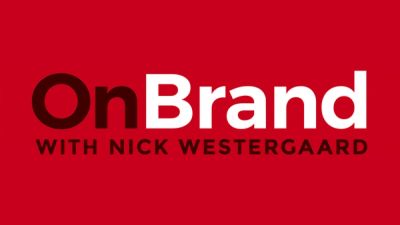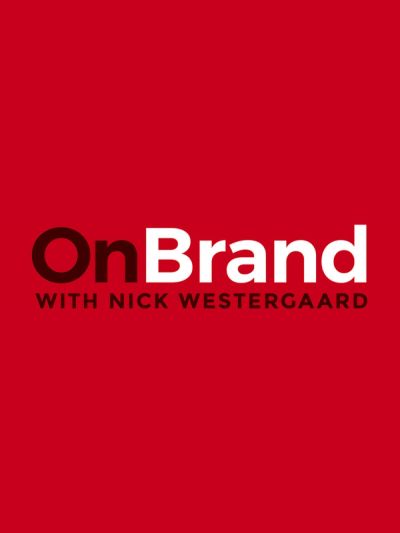
Shots: Five lessons for brands from YouTube creators
From consistency and professionalism to personality and perseverance, CCO Alex Moulton examines some of the cornerstones of successful YouTube channels to determine how brands can elevate their online presence.
From attention-winning thumbnails and compelling visual identities to attribution of content, every brand now needs what YouTube influencers have always had: video-friendly graphic design and an ownable brand identity that translates across social channels.
The graphic design and motion design approaches used by many prominent YouTubers are, in many cases, more engaging and considered than those deployed (or not) by large brands on their YouTube channels, despite our video-driven landscape.
Crucially, the most successful YouTube influencers appear to have mastered a visual system and language that helps them really connect with their audiences. While each injects their social brand with its own unique flavour – from Dude Perfect’s laid-back sports trickery to Markiplier’s genre-mashing videos – there are commonalities across YouTubers who master the art of continually captivating their intended audiences.
Using successful YouTube content creators as a benchmark, here are five takeaways from that brands can apply to grow their channels and their bottom line:
1. Have a consistent visual identity
Look at the channel of any prolific YouTuber and you’ll see that, while their style may evolve, a consistent brand language prevails on YouTube and across their social channels. See the vibrant splashes of glitter and holographic colour wherever nail art influencer Simply Nailogical posts tutorials and shares the Holo Taco brand.
You’d be surprised by how many established brands still lack a coherent set of brand guidelines for their social channels.
Similarly, for consumer brands, a comprehensive visual identity and motion system helps achieve brand expression that’s cohesive and consistent at every touchpoint. You’d be surprised by how many established brands still lack a coherent set of brand guidelines for their social channels. Repeatable, easily applicable guardrails in the form of a toolkit and style guide are vital to allow teams to create content confidently, professionally and rapidly.
On YouTube, the sometimes scrappy, amateur quality of visuals may be part of the appeal. While there’s something freeing about content creators taking a DIY approach, brands must be more professional, equipping internal graphic designers and content creators with the right tools to create a consistent visual identity. For inspiration, head to the NBA’s YouTube brand page, deservedly a mecca for basketball fans since 2005 with a comforting cadence of repeatable formats (think classic games in full, longform documentaries, and my favourite – Fantastic Finishes – for those final nail-biting moments.
2. Empower internal teams
Can you picture DanTDM editing and publishing YouTube posts single-handedly, while simultaneously managing his Insta and TikTok accounts? Unlikely. Prolific YouTubers have a team behind them working to coordinate a regular stream of content.
Similarly, brands that invest in training the day-in, day-out ambassadors of their brand will empower internal teams to be the most rigorous gatekeepers of all external brand communications.
Prolific YouTubers have a team behind them working to coordinate a regular stream of content.
To achieve ‘inside out’ branding, they’ll need to equip anyone responsible for creating brand content (a mix of voices from across different functions and levels can work well) with the purpose-built toolkits and guidelines to create consistently on-brand content. Home Depot provides useful how-to’s as well as documentary content about their staff, perfectly presented with consistent branding that feels authentic to the brand and the YouTube aesthetic.
3. Balance personality & professionalism
Of the brands currently seeing success on YouTube, most are only represented visually by their logo. And yet, YouTube is inherently personality-driven. Love him or loathe him, Mr. Beast has created a huge brand personality fronted by an individual. In addition to hired-gun influencers, brands may want to consider who could best represent their product or service from within, establishing recognisable and charismatic personalities that can authentically connect with an audience.
Love him or loathe him, Mr. Beast has created a huge brand personality fronted by an individual.
This could be the Founder or CEO, but may be better suited to another staff ambassador, or a select group of well-spoken company leaders. Music plugin maker Native Instruments regularly uses its staff to introduce and explain new products, with in-house expert Boris Mezga making frequent appearances to deliver more insightful content that allows viewers to more deeply understand the people and personality behind the brand.
The key is that all content maintains a consistent, engaging and even entertaining tone. Despite YouTube’s laid-back feel, the fundamentals of editorial quality control still apply to any brand using the platform. Whether a brand is posting to YouTube or other platforms, text and content descriptions should be short, concise and to the point, while aligned to the brand’s tone of voice. But don’t be dry. Feel free to add questions that prompt engagement in the comments section, and suggest more videos at the end of every video that inspire further discovery of your brand.
4. Tell compelling stories
Although some YouTube creators have found success in longer-form content, 11.7 minutes is the average YouTube video length. Since watch time is the most important ranking factor on YouTube, the creator’s goal is to increase audience retention to improve rankings. The challenge? Sustaining the attention of time-poor viewers amid an ocean of competing content.
Successful YouTube creators are skilled at crafting compelling narratives that keep viewers engaged. From the first impression they create with their thumbnail to the call to action in video introductions, winning attention is a priority. Smosh mastered the art of the grabby intro in the early 2000s with its Shut Up! intro, no longer in use but closely associated with the brand to this day.
Since watch time is the most important ranking factor on YouTube, the creator’s goal is to increase audience retention to improve rankings.
Most brands will opt for subtler ways to encourage viewers to “smash that subscribe button". Then, incorporating storytelling into their content helps audiences to connect emotionally with their products or services. The B2C fintech company Betterment does this by putting its own people at the centre of its branded content (although notably not on YouTube yet). Using human voices in its Facebook and Instagram content helps the brand add relatability and humanity when communicating its company story.
Reward audiences with a punchy ending and a clear visual reminder of the brand they’ve engaged with, paying careful consideration to logo placement. Brief (less than three second) branded animations at the start, end or as transitional elements can ensure that your content is clearly attributed to you on YouTube, and everywhere else it travels.
The end card of most YouTube videos should feature details of all related social accounts and links to other suggested videos to watch next. Encouraging audiences to continue their journey with your brand, with clear signposts to further content on that channel, is a best practice transferable to most platforms where brands communicate.
5. Practice perseverance
It is surprising how many brands still see YouTube, a platform with more than 2.7 billion worldwide monthly users at the time of writing, as a dumping ground for 30-second ads. And with audience scale comes the ability to monetise the channel, ultimately allowing the content to pay for itself.
Studying the cream of YouTube influencers is a useful exercise for brands in how to improve their online presence and build stronger connections with audiences. The regularity with which YouTubers post and engage with their viewers is a lesson in the patience and persistence required to succeed in today’s social video-driven landscape.
Building a successful YouTube channel takes time and dedication.
Building a successful YouTube channel takes time and dedication. Just as YouTubers make time to engage with viewer comments, brands should focus on consistent, long-term efforts over quick wins, actively responding to feedback and comments whether on the platform itself, or through additional social posts or other forms of brand communication.
Jenna Marbles, one of the original YouTubers, built a fanbase over many years of consistent engagement. Although she has now left the platform, people continue to share compilations of her videos on TikTok and beg for a comeback to YouTube. By addressing her audience consistently and being honest and transparent when she made mistakes, she has built a brand that has effectively outlasted her YouTube presence.
Creating a cohesive brand experience that resonates with your intended audience means understanding your brand's personality, values and target audience inside out. If brands take only one learning from YouTube, it should be the level of intent that goes into being consistent enough to elicit meaningful, positive engagement.
Explore more
New business inquiries.
How can we help?
NYC 11:05
STK 05:05
LA 08:05
Get our newsletter
Sign up for updates,
insights, and inspirations
from our studio.




